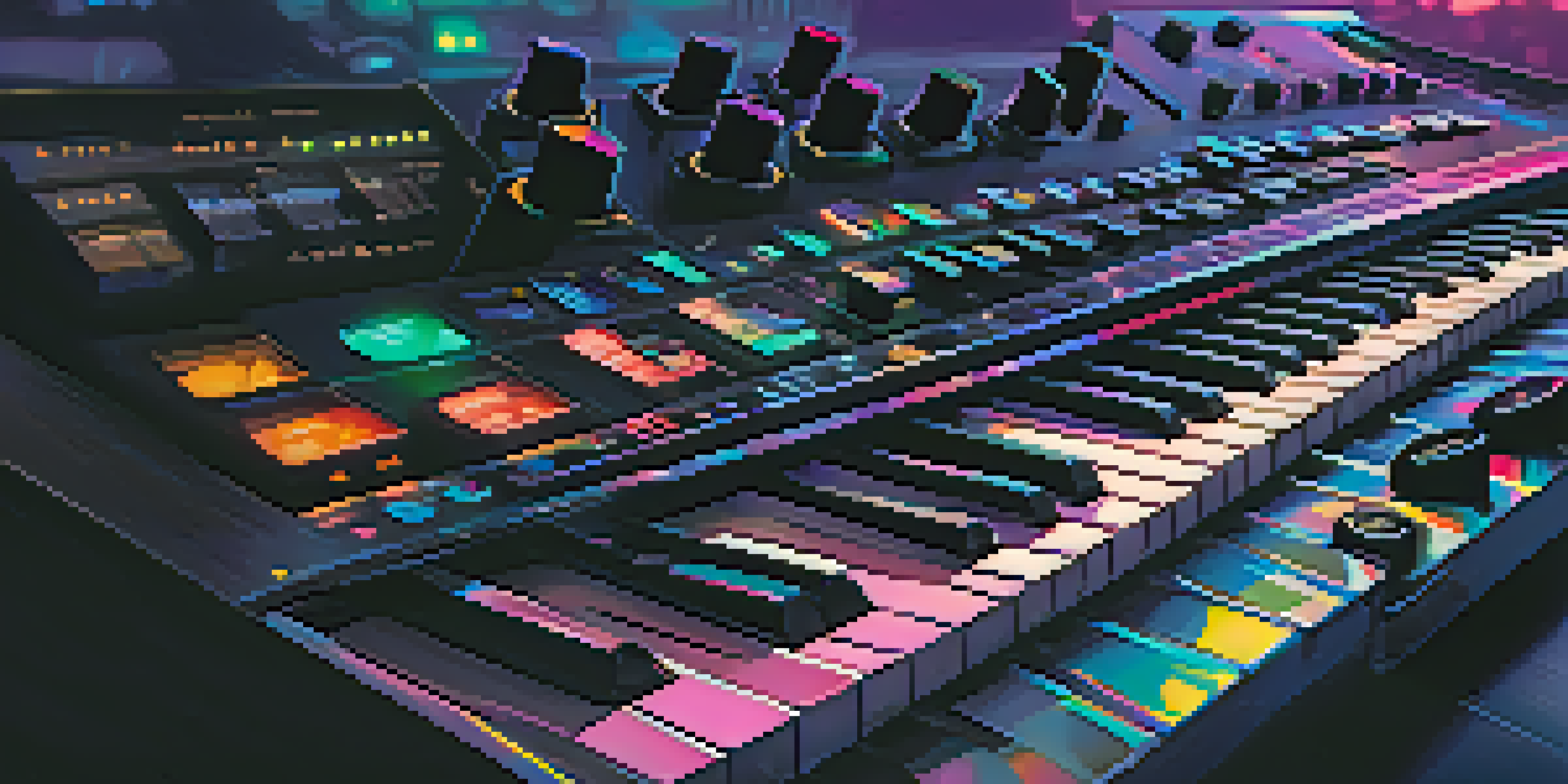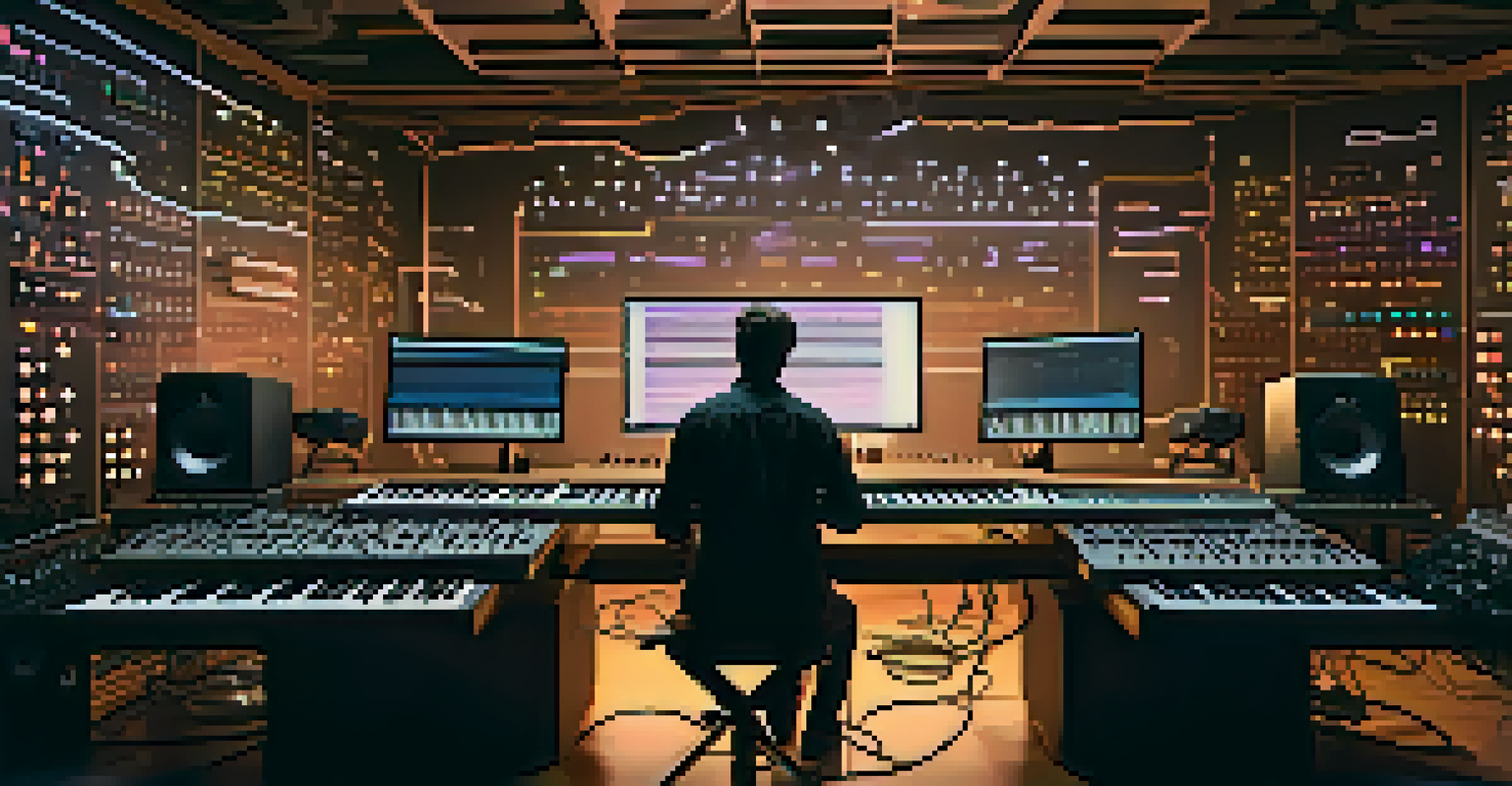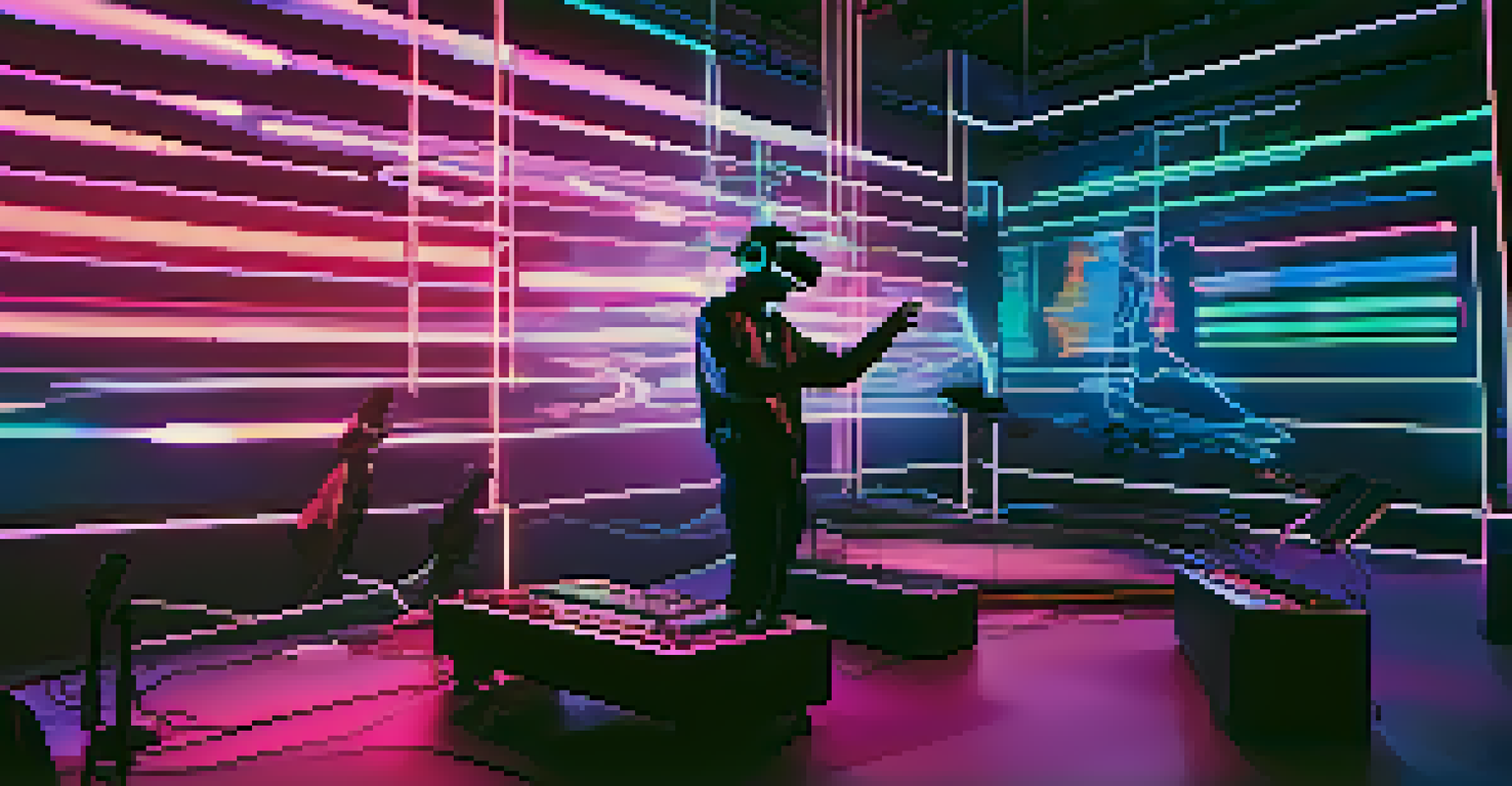The History of MIDI: Connecting Musical Instruments

What is MIDI and Why It Matters in Music
MIDI, or Musical Instrument Digital Interface, is a protocol that allows electronic musical instruments, computers, and other devices to communicate with each other. Introduced in the early 1980s, it revolutionized the way music was created and recorded. By transmitting information about notes, pitch, and velocity, MIDI enables musicians to create complex arrangements without the need for multiple physical instruments.
MIDI is the universal language of music, allowing artists to share ideas and collaborate across different platforms and devices.
Imagine a conductor leading an orchestra, but instead of musicians, the conductor is directing various electronic devices. This is the essence of MIDI—it serves as the universal language that brings together different musical tools. Whether you’re a pianist, a drummer, or a producer, MIDI opens up endless possibilities for creativity.
The significance of MIDI extends beyond mere convenience; it democratized music production. With MIDI, anyone can compose music on a computer without needing a full band, making music creation accessible to a wider audience.
The Birth of MIDI: A Collaborative Effort
The origins of MIDI can be traced back to a group of visionary musicians and engineers in the late 1970s. As synthesizers gained popularity, the need for a standardized communication protocol became clear. In 1981, a group including Dave Smith, founder of Sequential Circuits, came together to establish MIDI as a universal standard.

This collaboration was pivotal; it wasn’t just about technical specifications but also about fostering creativity among artists. They envisioned a future where musicians could easily share ideas and collaborate, regardless of the instruments they used. This dream laid the foundation for the MIDI we know today.
MIDI Revolutionized Music Creation
MIDI, introduced in the early 1980s, transformed music by allowing electronic instruments and computers to communicate, making composition accessible to all.
The first MIDI specification was released in 1983, and it set the stage for a new era in music technology. This protocol allowed different devices to communicate seamlessly, making it possible for musicians to create layered sounds and intricate compositions.
MIDI's Evolution: From Hardware to Software
Initially, MIDI was primarily used with hardware instruments, such as synthesizers and drum machines. However, as technology evolved, MIDI found its way into software applications, changing the landscape of music production. Digital Audio Workstations (DAWs) began incorporating MIDI, allowing producers to create and edit music more intuitively.
The beauty of MIDI lies in its ability to democratize music creation, making it accessible to anyone with a computer and a spark of creativity.
Imagine having an entire orchestra at your fingertips, where you can tweak every note and sound with just a few clicks. This shift from hardware to software significantly enhanced the creative process, making it easier for musicians to experiment with different sounds and arrangements.
Today, MIDI is an integral part of music production, and its versatility allows for everything from live performances to intricate studio recordings. As software continues to develop, the potential for MIDI seems limitless, opening doors to new genres and artistic expressions.
MIDI and the Rise of Electronic Music
The emergence of electronic music in the late 20th century was significantly influenced by MIDI technology. Artists began to explore the capabilities of synthesizers and sequencers, creating new sounds and styles that were previously unimaginable. MIDI enabled these artists to push the boundaries of music, fostering genres like techno, house, and synth-pop.
Think of MIDI as the building blocks of electronic music; it allowed producers to layer sounds, manipulate rhythms, and create complex compositions. This newfound freedom attracted a wave of innovative musicians who experimented with sounds and structures, leading to the birth of entire music genres.
MIDI's Role in Electronic Music
MIDI became the foundation for electronic music, enabling artists to experiment with sounds and styles, leading to the birth of new genres.
As electronic music gained popularity, so did the importance of MIDI. It became the backbone of countless tracks, enabling artists to collaborate and share their work more easily, thus expanding the global reach of electronic music.
MIDI in the Modern Music Landscape
Today, MIDI remains a vital component of music creation, and its use has only expanded. From film scores to video game soundtracks, MIDI is at the heart of many modern compositions. Musicians now have access to a plethora of MIDI-compatible devices and software that enhance their creative possibilities.
With the advent of new technologies like MIDI 2.0, the protocol is evolving to meet the demands of contemporary music production. This upgrade introduces features such as increased resolution and enhanced expressiveness, allowing for more nuanced performances and interactions between devices.
As the music industry continues to evolve, MIDI adapts, ensuring that artists can explore their creativity without limitations. This ongoing transformation highlights MIDI's enduring relevance in a fast-paced, ever-changing musical landscape.
MIDI's Impact on Music Education and Accessibility
MIDI has also played a significant role in music education, making learning more accessible to aspiring musicians. With MIDI keyboards and software, students can practice and compose music without needing expensive instruments. This democratization of music education encourages more people to explore their musical talents.
Consider the traditional challenges of learning an instrument—cost, space, and access to teachers. MIDI shifts these barriers, providing a more inclusive environment for music education. Online tutorials and resources have flourished, allowing learners to engage with music in ways that were previously unreachable.
Future Innovations in MIDI
With advancements like MIDI 2.0 and the integration of AI and virtual reality, MIDI is set to further enhance creativity and collaboration in music.
As a result, MIDI not only nurtures creativity but also fosters a global community of musicians. The ability to collaborate online and share MIDI files has created a new generation of artists who can learn from each other, regardless of their geographical location.
Looking Ahead: The Future of MIDI
As we look to the future, MIDI is poised to continue its evolution alongside advancements in technology. Innovations such as artificial intelligence and virtual reality are beginning to intersect with music production, opening up new realms for creativity. These developments could further enhance the capabilities of MIDI, making it an even more powerful tool for artists.
Imagine creating music in a virtual space where you can manipulate sounds with your body or voice. This integration of technology and music could revolutionize how we experience and create art. As the lines between different forms of media blur, MIDI will undoubtedly play a crucial role in shaping this landscape.

Ultimately, the future of MIDI is bright. As it adapts to new technologies and trends, it will continue to foster creativity, collaboration, and innovation in the world of music.